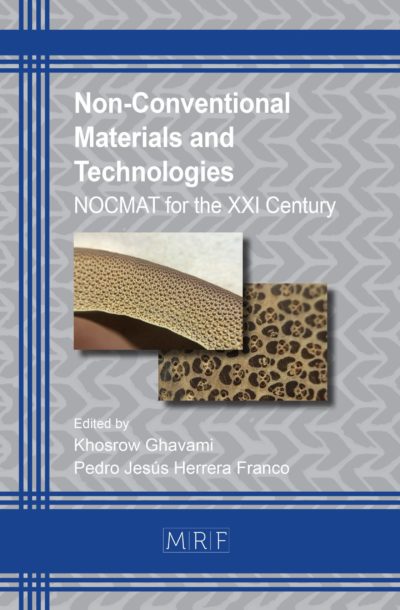Optimizing sheet hydroforming process parameters with a focus on sustainability
Angela Cusanno, Luca Ciacci, Antonio Piccininni, Pasquale Guglielmi, Francesco Arfelli, Donato Sorgente, Gianfranco Palumbo
Abstract. Sheet hydroforming (SHF) is a widely used metal forming process in aerospace and automotive industries due to its ability to produce complex shapes with near-net accuracy. SHF process parameters are usually optimized focusing on outputs such as shape accuracy and thickness distribution. However, in response to the increasing regulatory focus on energy efficiency and sustainability, integrating environmental performance into SHF optimization has become crucial. This study focuses on identifying proper environmental indicators, determined by means of life cycle assessment (LCA) and on analyzing them to assess their influence on the determination of the SHF workability window. SHF tests were conducted in different working conditions by varying the forming temperature and the oil pressure rate. For each test, thickness distribution and shape accuracy were considered as outputs for evaluating the manufacturing performance, whereas LCA models were used to assess the potential for the related direct and indirect environmental impact. Then, the most appropriate environmental outputs to be integrated into the process evaluation framework were determined.
Keywords
Hydroforming, Aluminium Alloys, Sustainability, LCA
Published online 5/7/2025, 9 pages
Copyright © 2025 by the author(s)
Published under license by Materials Research Forum LLC., Millersville PA, USA
Citation: Angela Cusanno, Luca Ciacci, Antonio Piccininni, Pasquale Guglielmi, Francesco Arfelli, Donato Sorgente, Gianfranco Palumbo, Optimizing sheet hydroforming process parameters with a focus on sustainability, Materials Research Proceedings, Vol. 54, pp 2494-2502, 2025
DOI: https://doi.org/10.21741/9781644903599-269
The article was published as article 269 of the book Material Forming
![]() Content from this work may be used under the terms of the Creative Commons Attribution 3.0 license. Any further distribution of this work must maintain attribution to the author(s) and the title of the work, journal citation and DOI.
Content from this work may be used under the terms of the Creative Commons Attribution 3.0 license. Any further distribution of this work must maintain attribution to the author(s) and the title of the work, journal citation and DOI.
References
[1] Bell C, Corney J, Zuelli N, Savings D. A state of the art review of hydroforming technology Its applications, research areas, history, and future in manufacturing. International Journal of Material Forming 2020;13:789–828. https://doi.org/10.1007/s12289-019-01507-1
[2] Najafizadeh M, Yazdi S, Bozorg M, Ghasempour-Mouziraji Mehran, Hosseinzadeh M, Zarrabian M, et al. Classification and applications of titanium and its alloys: A review. Journal of Alloys and Compounds Communications 2024;3:100019. https://doi.org/10.1016/J.JACOMC.2024.100019
[3] Hao Z, Ju Y, Chen L. Тhe use of aluminium and magnesium alloys in automotive lightweight technologies. Journal of Mechanical Science and Technology 2023;37:4615–22. https://doi.org/10.1007/S12206-023-0712-2/METRICS
[4] Chinchanikar S, Mulik H, Varude P, Atole S, Mundada N. A review of emerging hydroforming technologies: design considerations, parametric studies, and recent innovations. Journal of Engineering and Applied Science 2024 71:1 2024;71:1–31. https://doi.org/10.1186/S44147-024-00546-Z
[5] Ying-ying F, Hong-ge Z, Zong-an L, Qing-lin W. Loading path optimization of T tube in hydroforming process using response surface method. International Journal of Advanced Manufacturing Technology 2019;101:1979–95. https://doi.org/10.1007/s00170-018-3087-2
[6] Yaghoubi S, Piccininni A, Seidi M, Guglielmi P. Multi-criteria optimization of the warm hydroforming process of an aluminum component based on the adaptive neuro-fuzzy inference system. J Manuf Process 2024;132:75–92. https://doi.org/10.1016/J.JMAPRO.2024.10.075
[7] Cooper DR, Rossie KE, Gutowski TG. The energy requirements and environmental impacts of sheet metal forming: An analysis of five forming processes. J Mater Process Technol 2017;244:116–35. https://doi.org/10.1016/j.jmatprotec.2017.01.010
[8] Borda F, La Rosa AD, Filice L, Gagliardi F. Environmental comparison of opposing manufacturing strategies at changing of energy sources, EoL approaches and shape peculiarity for an automotive component. Advances in Materials and Processing Technologies 2024. https://doi.org/10.1080/2374068X.2024.2432724
[9] Ingarao G, Ambrogio G, Gagliardi F, Di Lorenzo R. A sustainability point of view on sheet metal forming operations: material wasting and energy consumption in incremental forming and stamping processes. J Clean Prod 2012;29–30:255–68. https://doi.org/10.1016/J.JCLEPRO.2012.01.012
[10] Pintarič ZN, Kravanja Z. Selection of the economic objective function for the optimization of process flow sheets. Ind Eng Chem Res 2006;45:4222–32. https://doi.org/10.1021/IE050496Z/ASSET/IMAGES/MEDIUM/IE050496ZE00088.GIF
[11] ISO 14040:2006 – Environmental management — Life cycle assessment — Principles and framework n.d.
[12] ISO 14044:2006 – Environmental management — Life cycle assessment — Requirements and guidelines n.d.
[13] Wernet G, Bauer C, Steubing B, Reinhard J, Moreno-Ruiz E, Weidema B. The ecoinvent database version 3 (part I): overview and methodology. International Journal of Life Cycle Assessment 2016;21:1218–30. https://doi.org/10.1007/S11367-016-1087-8/FIGURES/7
[14] European Platform on LCA | EPLCA n.d. https://eplca.jrc.ec.europa.eu/EnvironmentalFootprint.html (accessed January 7, 2025).
[15] Italy – Countries & Regions – IEA n.d. https://www.iea.org/countries/italy/electricity (accessed January 7, 2025).
[16] Cusanno A, Arfelli F, Piccininni A, Ciacci L, Guglielmi P, Sorgente D, et al. Results of warm sheet hydroforming tests on AA5754-H111 and LCA process analysis. 2025. https://doi.org/10.5281/zenodo.14852195














